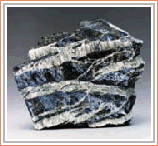Types of Asbestos

The word asbestos refers to a group of fibrous, silicate minerals which can be found in natural deposits all over the world. There are two major types of asbestos which can be distinguished by their crystalline structure. Serpentines which appear to be layered in sheets, and and amphiboles which are more chain like.

Chysotile, or white asbestos, is the only member of the serpentine group and is the most commonly used form of asbestos. Also known as white asbestos chrysotile accounts for about 95% of the worlds production of asbestos




The amphiboles group is made of amosite, crocidolite, anthophyllite, tremolite and actinolite. Amosite, or brown asbestos,is primarily utilized in construction applications and is the second most commonly used asbestos form. Crocidolite, or blue asbestos, is used in particularly high temperature situations. The remaining asbestos forms are rare and are not used in industry. They can however be present as contaminates (as was the case in the Libby, Montana vermiculite mine.)
Asbestos has a number of properties which have long enticed humans to continue using it in spite of its detrimental effects. It is strong, flexible, resistant to heat and chemicals, and will not conduct an electrical current. However, these same qualities of durability which make it so desirable in industry that make it so dangerous to humans. On a microscopic level, asbestos fibers are jagged and glasslike in appearance. They are virtually indestructible, and once inhaled there is no known method of removal.
Related: Asbestos usage through out history
